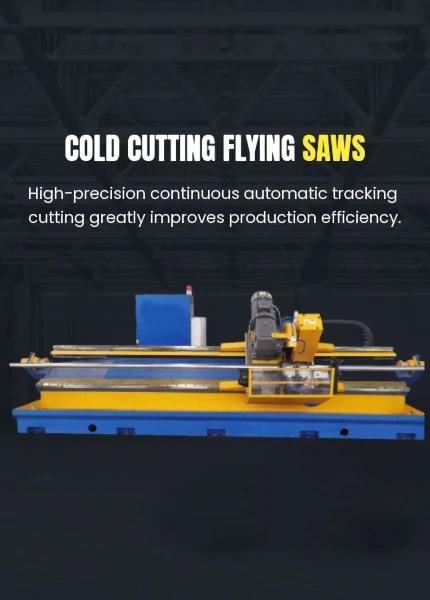Metal Straightening Equipment for Precision Manufacturing and Enhanced Structural Integrity
The Importance of Metal Straightening Machines in Industrial Processes
Metal fabrication is an essential aspect of various industries, ranging from automotive to construction. One critical operation within this domain is the straightening of metal components, which ensures that these materials meet the necessary tolerances and specifications for further processing. Metal straightening machines play a crucial role in achieving this objective, eliminating distortions and warping that can occur during manufacturing and handling. This article will explore the significance of metal straightening machines, their functioning, and the benefits they bring to industrial applications.
Understanding Metal Straightening Machines
Metal straightening machines are specialized equipment designed to rectify distorted or uneven metal parts. These machines utilize various methods, such as mechanical force, heat, or a combination of both, to realign the molecules in the metal, thereby restoring its original shape. The process generally involves placing the bent or warped metal on a set of rollers or presses that apply pressure in the opposite direction of the distortion.
There are several types of metal straightening machines, including hydraulic presses, roller straighteners, and CNC-based systems. Each type has its particular use-case scenarios and advantages. For instance, hydraulic presses are often used for heavy-duty applications, while roller straighteners are more suited for lighter, continuous processes. The evolution of technology has led to the development of advanced CNC-based straightening machines that incorporate automated systems, optimizing precision and efficiency in the straightening process.
The Functioning of Metal Straightening Machines
The operation of metal straightening machines begins with an analysis of the metal piece to determine the extent and nature of the distortion. Once assessed, the metal is positioned correctly within the aligning mechanism of the machine. The machine then applies force—either via mechanical means or hydraulic pressure—to deform the metal back to its intended shape.
In some machines, a process called incremental straightening is employed. This method involves multiple passes through the machine, with slight adjustments made each time to achieve the optimal straightness. This careful approach not only improves accuracy but also helps in minimizing stress concentrations that could lead to further warping in the future.
Moreover, many modern metal straightening machines are equipped with advanced monitoring systems. These technologies allow operators to assess the straightening process in real-time, ensuring that quality control standards are met consistently. The combination of automation and monitoring has significantly increased the reliability of the straightening procedure and reduced labor costs.
metal straightening machine

Benefits of Using Metal Straightening Machines
Investing in metal straightening machines offers several advantages to manufacturers
1. Improved Quality Control By ensuring that metal components are straight and within specified tolerances, manufacturers can enhance the overall quality of their products. This consistency is crucial for parts that require precise alignment, such as those used in automotive assembly.
2. Increased Efficiency Automated and semi-automated straightening machines reduce the need for manual labor and the associated risks of human error. This increase in efficiency can lead to shorter production cycles and improved throughput.
3. Cost-Effectiveness While the initial investment in metal straightening machines can be significant, the long-term savings derived from reduced waste and enhanced productivity often outweigh these costs. Additionally, straightening ensures that raw materials are used effectively, minimizing scrap and maximizing return on investment.
4. Versatility Modern straightening machines can handle various types of metal alloys and component shapes, making them suitable for multiple applications. This versatility allows manufacturers to adapt quickly to changing production needs without the necessity for investing in multiple pieces of specialized equipment.
5. Enhanced Safety Metal straightening machines minimize the physical strain on workers by automating the heavy lifting and manipulation of metal components. This reduction in manual handling lowers the likelihood of workplace injuries and promotes a safer working environment.
Conclusion
Metal straightening machines are indispensable tools in the realm of metal fabrication and manufacturing. By ensuring that metal components are accurately aligned and free from distortions, these machines enhance product quality, boost efficiency, and ultimately contribute to the overall success of the manufacturing process. As industries continue to evolve and demand higher precision and reliability, the role of metal straightening machines will undoubtedly become even more critical in meeting these challenges head-on. Investing in such technology not only pays off in the immediate term but also fortifies a company's position in a competitive market.
-
High Frequency Straight Seam Welded Pipe Production Line-BzZhou Xinghua Machinery Equipment Manufacturing Co., LTD.|Precision Welding, High EfficiencyNewsJul.30,2025
-
High Frequency Straight Seam Welded Pipe Production Line|BzZhou Xinghua|Precision Welding&EfficiencyNewsJul.30,2025
-
High Frequency Straight Seam Welded Pipe Production Line - BzZhou Xinghua|Precision Engineering&EfficiencyNewsJul.30,2025
-
High-Frequency Straight Seam Welded Pipe Production Line-BzZhou Xinghua Machinery Equipment Manufacturing Co., LTD.NewsJul.30,2025
-
High-Frequency Straight Seam Welded Pipe Production Line-BzZhou Xinghua Machinery Equipment Manufacturing Co., LTD.|Precision Manufacturing, High EfficiencyNewsJul.30,2025
-
High Frequency Straight Seam Welded Pipe Production Line-BzZhou Xinghua Machinery Equipment Manufacturing Co., LTD.|Precision Steel Pipe Manufacturing&Industrial EfficiencyNewsJul.29,2025


